What or who is family? It is a debate that has taken center stage in our relatively “soft” lives of western culture. It is often defined largely, though not entirely, in the context of character and moral values. For many of us, myself included, we accept responsibility for caring and supporting family members the moment we say, “I do,” when we take the sacred marriage oath. We see nurturing children and providing for family welfare – financial security and social standing – as essential objectives of marriage and family.
Faced with the harsh conditions in the Canadian Artic, the Inuit’s very existence is dependent upon family and community. Food, proper shelter and social safety networks – critical for life in any culture – are scarce for the Inuit. Children are necessary to maintain the family – to hunt and fish among other supports. Larger social groups working together are also key to survival. In short, individuality submits to family and collective welfare.
So it’s not surprising that family and the larger community is a popular theme in Inuit art. What may surprise you is the very different approaches the artists have taken.
Some, explore family by celebrating universal family moments – a mother embracing her young or a father wrestling with his boys. Others explore the larger connections: to other Inuit and to the animals that populate their world. As you will see, in the gallery below, the Inuit respect animals and endow them with human qualities and sensitivities, and justify hunting for sustenance, not entertainment, and honor their souls.
Still other sculptures explore the transformative power of the Inuit’s natural connections: Did Latcholassie Akesuk sculpt a mother carrying her child or is it a shaman transforming before our eyes into a bird? Are the lovely birds carved by Osuiutok Ipeelee a family gliding through water or is a transformed shaman being guided on his journey by spirit birds? You decide. Use the comment section below to share your thoughts. I look forward to hearing from you.
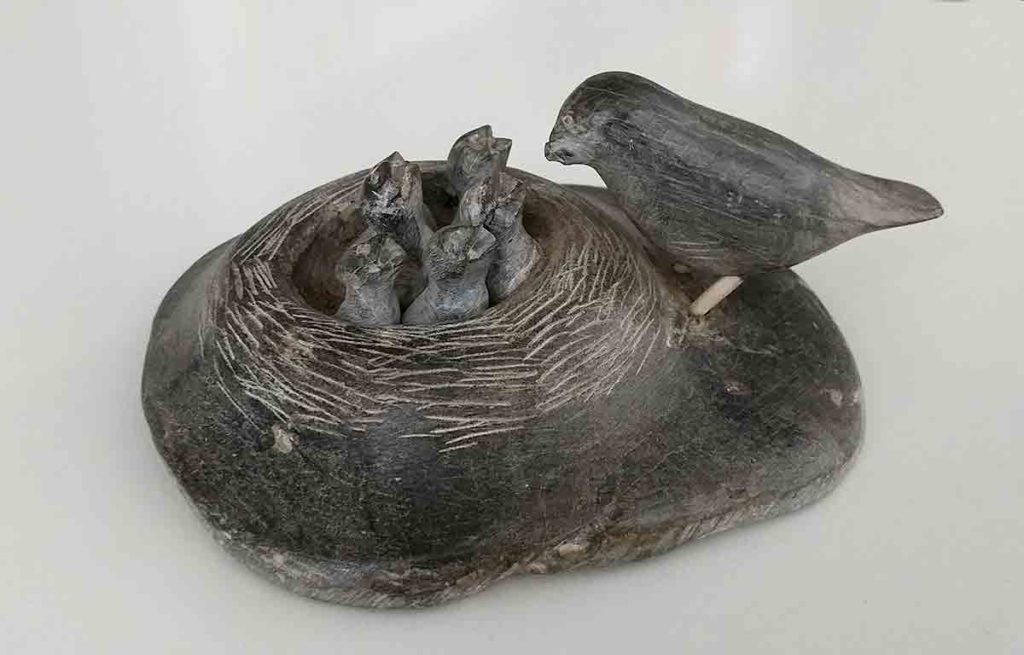
Bird sculptures are common in Inuit art. This sculpture by Ennutsiak shows baby birds being fed by their attentive mother. As in my previous blog on movement in Inuit art, the baby chicks' open beaks make them active with anticipation. I can almost hear them squeaking.
Photo by Joram Piatigorsky
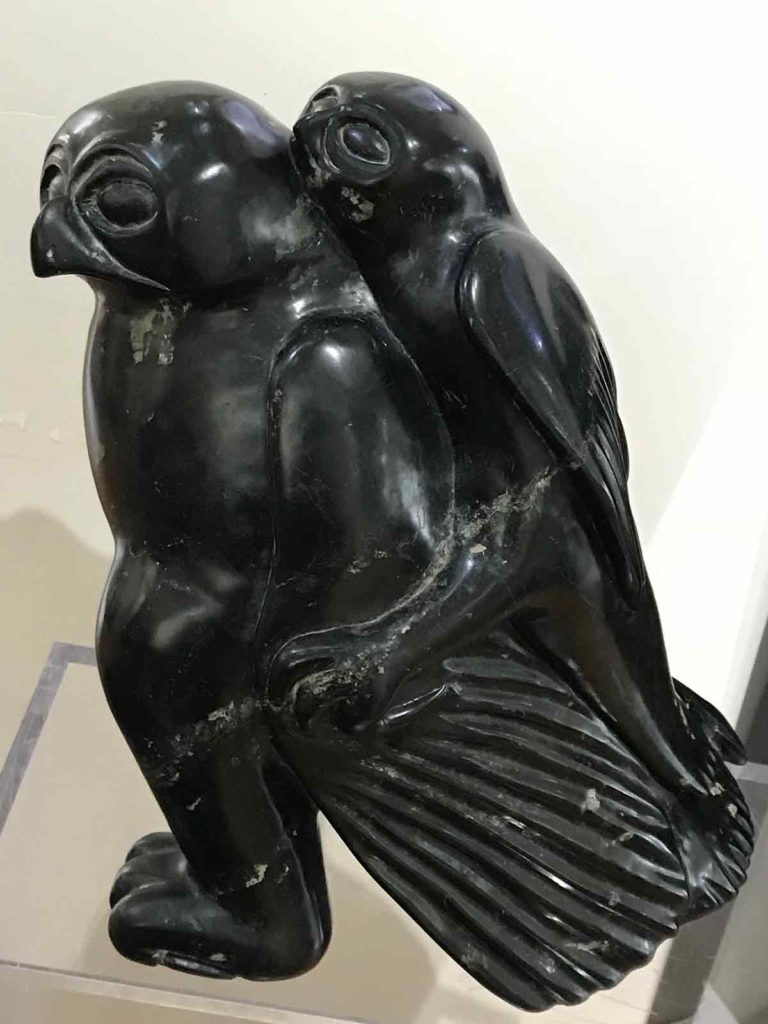
Lukta Qiatsuq's mother and child owl sculpture shows a human-like dependence of the baby on the back of the alert mother. The steely awareness of the mother is complemented by the soft, resting head of her child clutching to her for security. Nothing is going to harm this lucky child.
Photo by Joram Piatigorsky
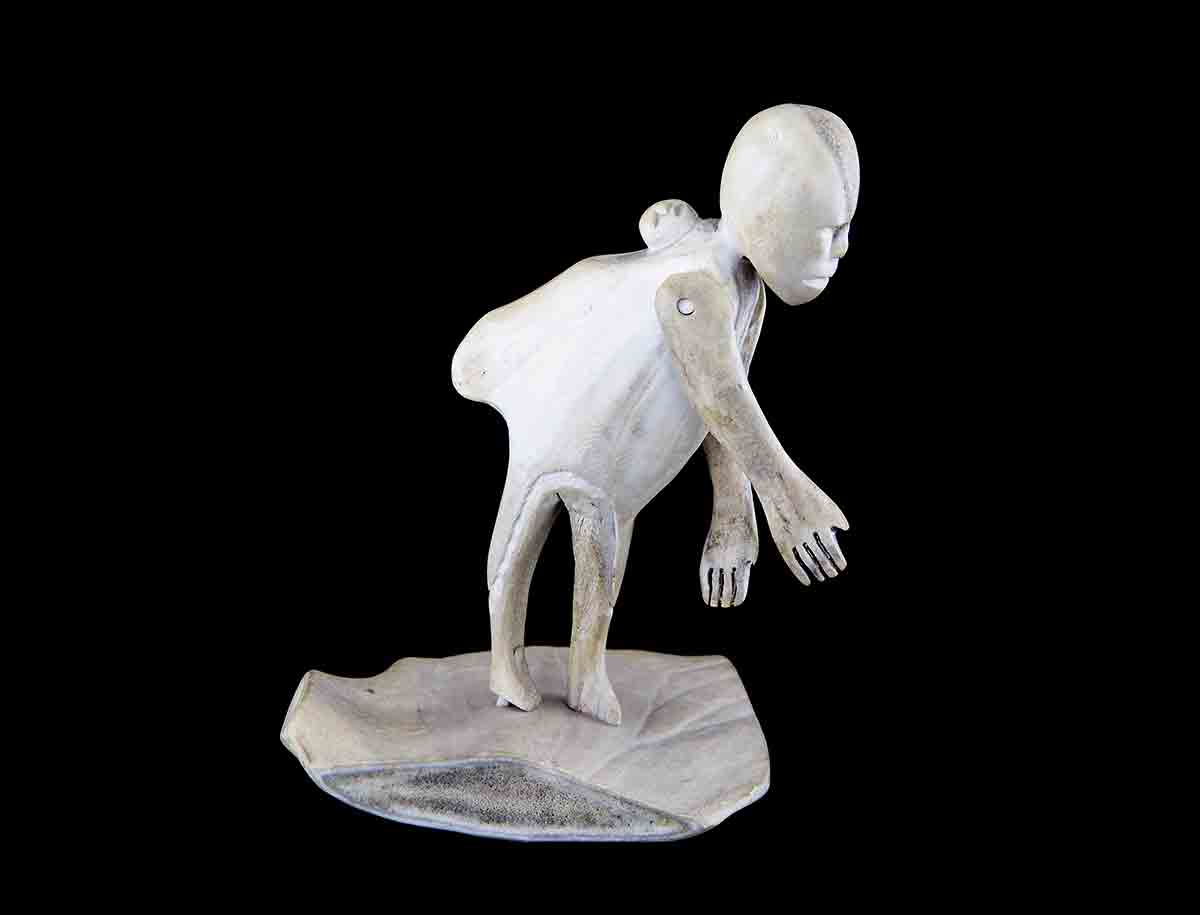
The caribou antler sculpture by Luke Iksiktaaryuk shows the mother walking with her child on her back.
Photo by Michael Kingsberry, Select Cut Media LLC
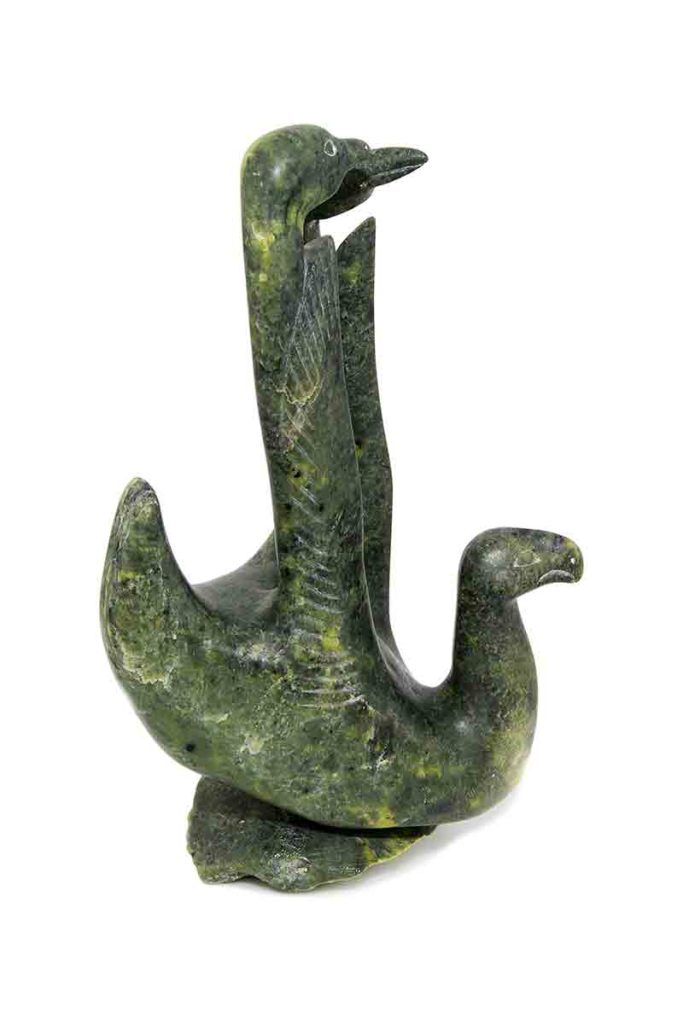
I find this carving in the beautiful green serpentine stone by one of the greatest Inuit sculptors, Osuitok Ipeelie, extraordinary. Once again, a mother/child piece shows the importance of family, even among animals. But note the baby birds arising from the wings of the mother. To me, this is sheer artistry and beauty, the physical integration of the mother and her progeny, almost an art form of a mammalian placenta nurturing the young.
Photo by Michael Kingsberry, Select Cut Media LLC
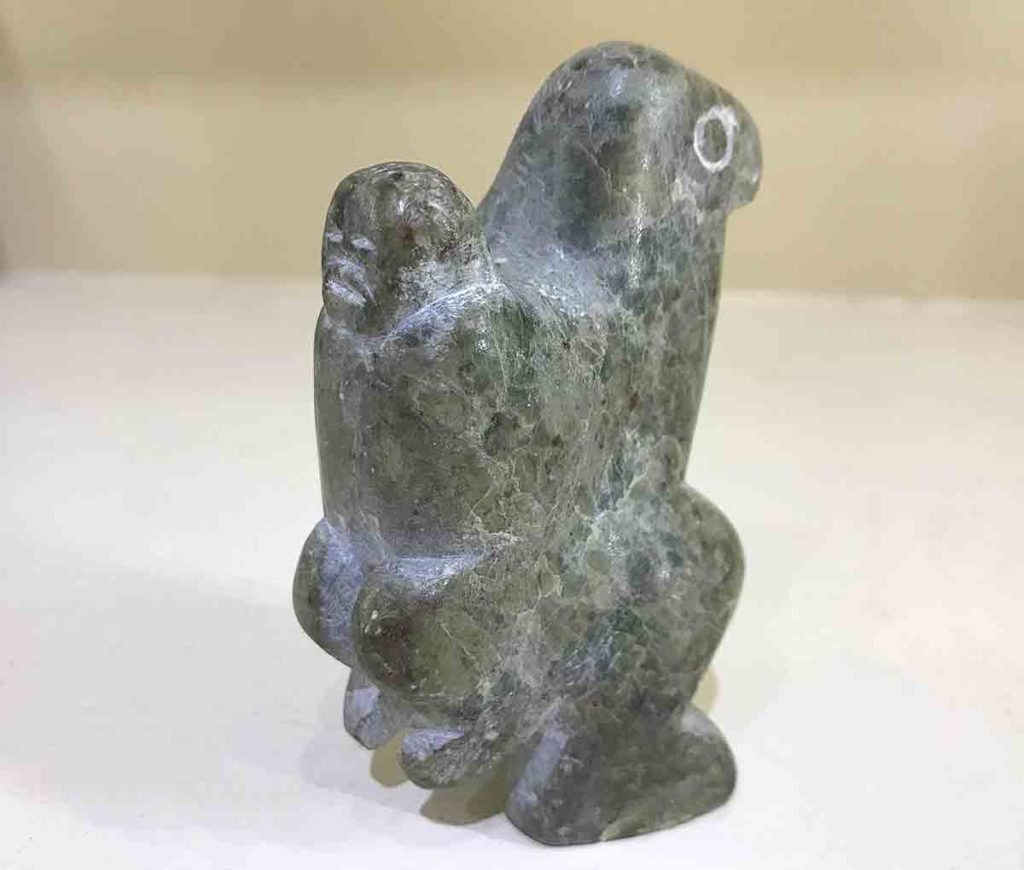
As with the Iksitaaryuk antler sculpture above, here's a sculpture by Latcholassie Akesuk of a mother carrying her child on her back, but it's a lot more complex. The mother has a bird face, but human legs and feet, and the child has a human face. This is a mother/child transformation shaman sculpture, identifying strongly with Inuit mythology and belief.
Photo by Joram Piatigorsky

A birth scene by Ennutsiak, a master carver of realism. The baby lies in the center of the group, which includes two children in addition to three adults.
Photo by Joram Piatigorsky

Simply a great sculpture attributed to Isa Agiattusuk Smiler of a nursing mother. The close up below shows the mother holding her breast to the infant's mouth.
Photo by Joram Piatigorsky

The mother's hand reaches under her coat to hold her breast to her baby's mouth
Photo by Joram Piatigorsky
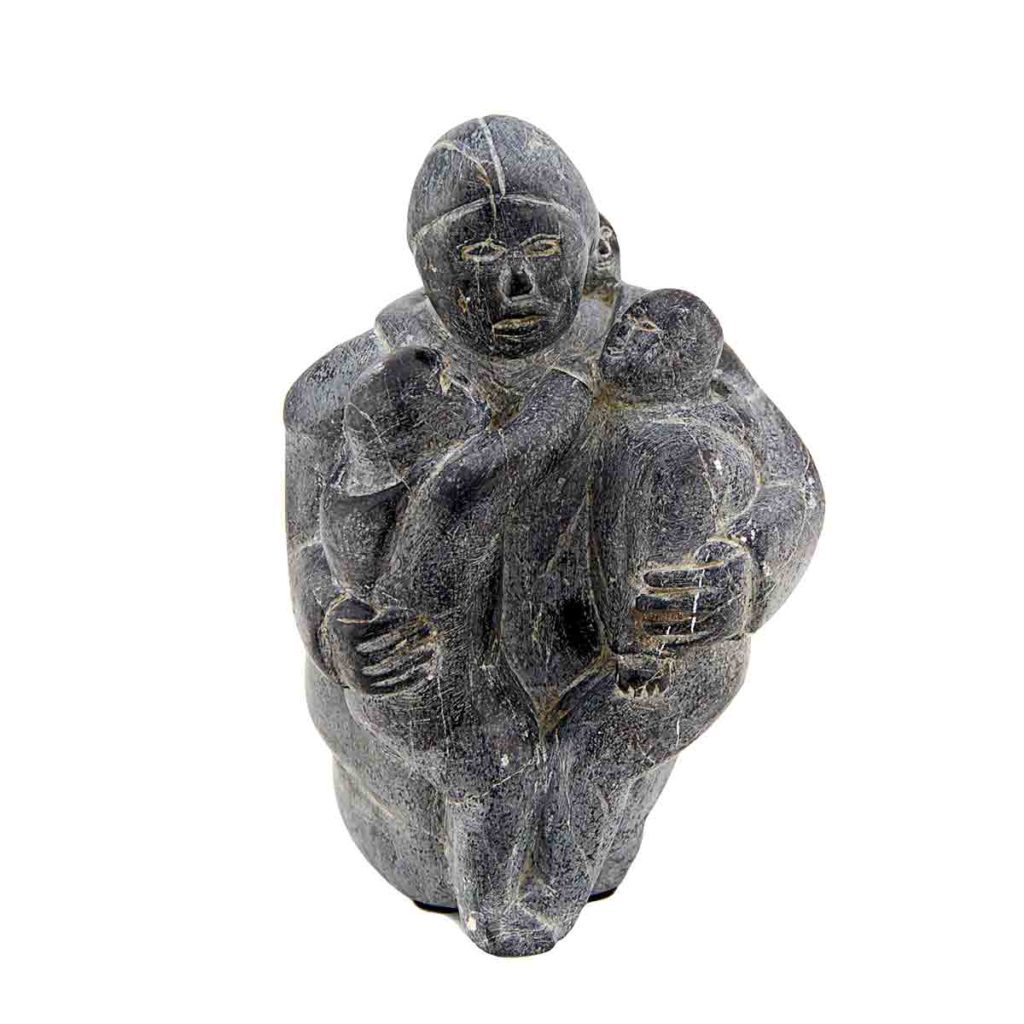
A touching scene of a mother holding her two children close to her heart by Nancy Pukingnak.
Photo by Michael Kingsberry, Select Cut Media LLC
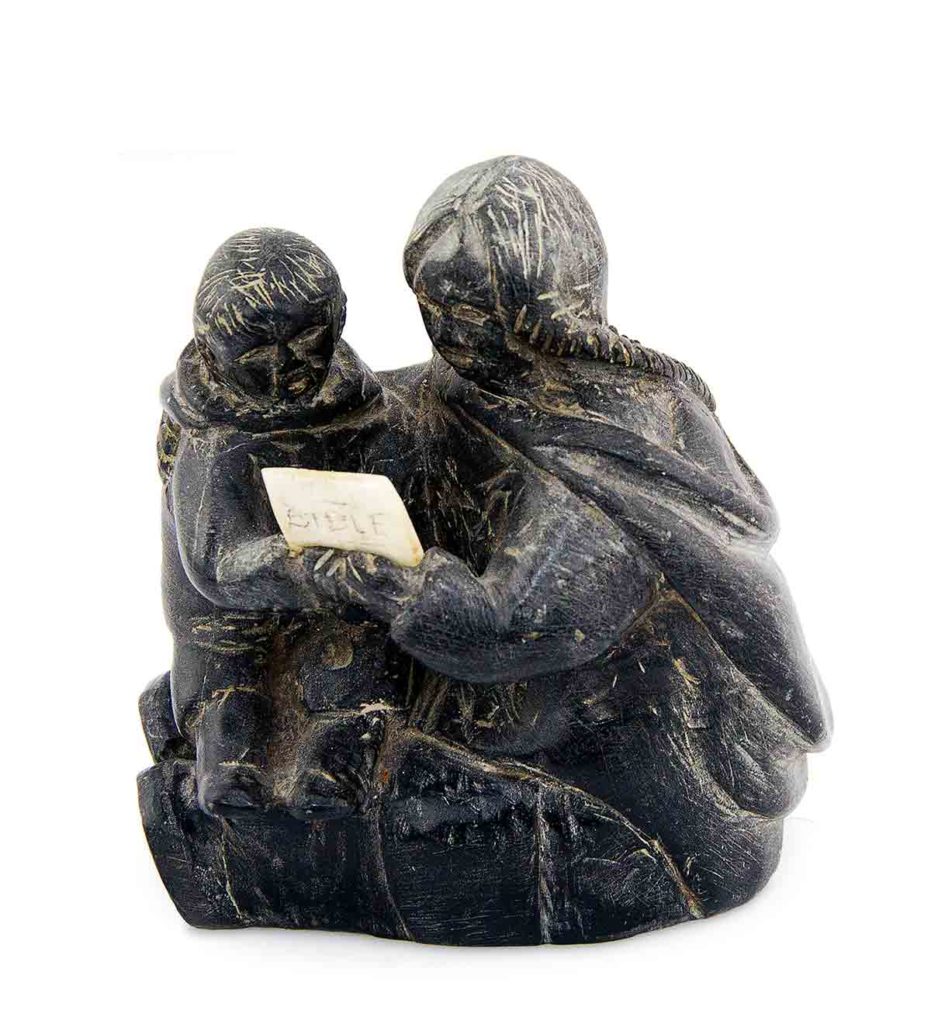
Ennutsiak again showing the mother reading the bible with her child, a relatively rare
Inuit sculpture showing the influence of missionaries on converting Inuit to Christianity.
Photo by Michael Kingsberry, Select Cut Media LLC

Ovilu Tunnillie's sculpture of a grieving mother. The artist's daughter committed suicide, which may have been the basis for this sad moving piece.
Photo by Michael Kingsberry, Select Cut Media LLC
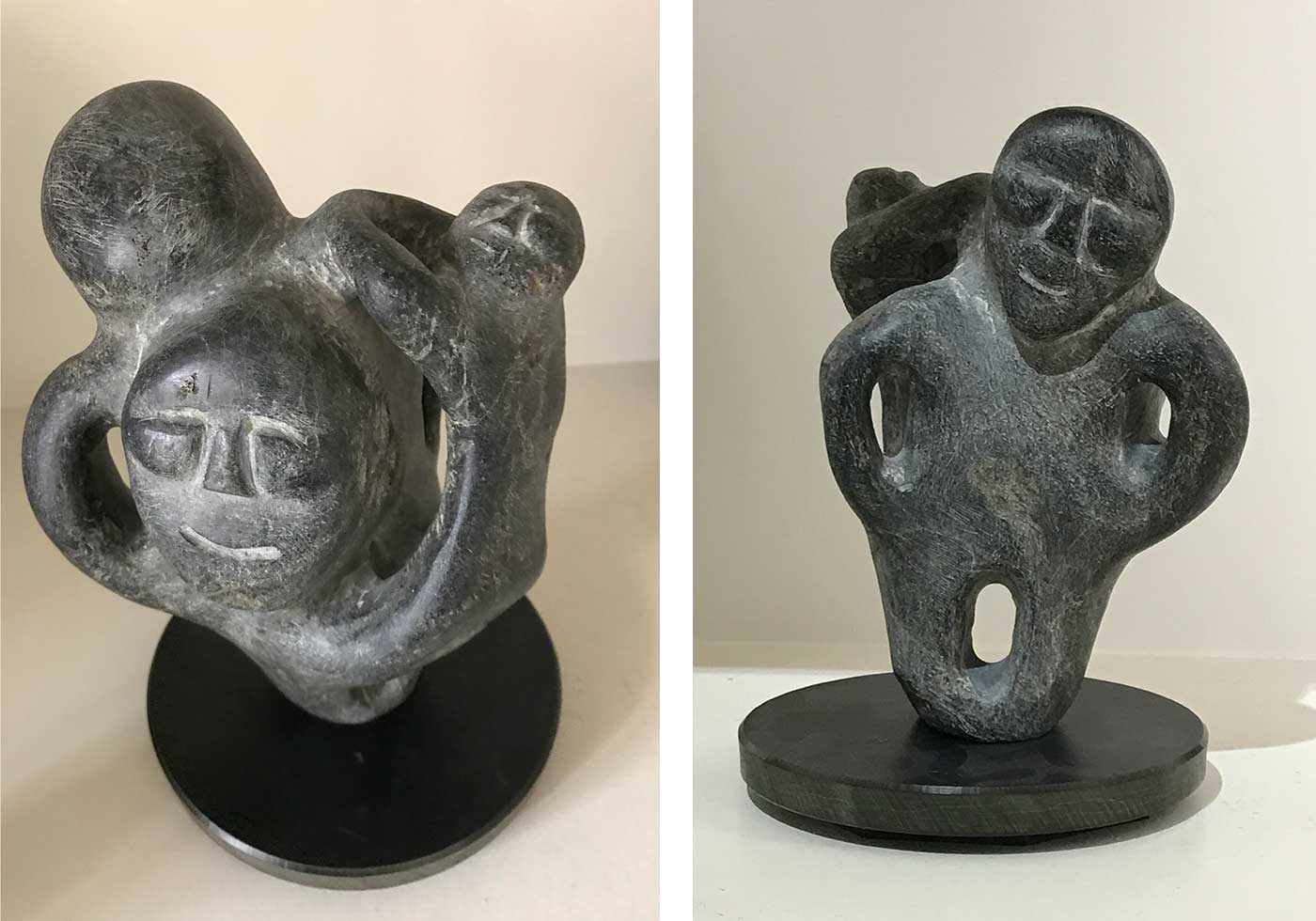
John Tiktak is one of the most renowned of the Inuit sculptors. Here we see the child on the right as if rising from nowhere. Presumably the face is of the mother. A large figure is sculpted on the other side of the piece, seen below. Three dimensional sculptures with carvings on the sides and back (and even underneath at times) are common. I believe the back figure is the father, but as most Inuit sculptures, I'm left to my own interpretation. Note the extensive use of empty circles, very much like Henry Moore. My guess: the view on the right is the father standing proudly with his wife and child behind.
Photo by Joram Piatigorsky
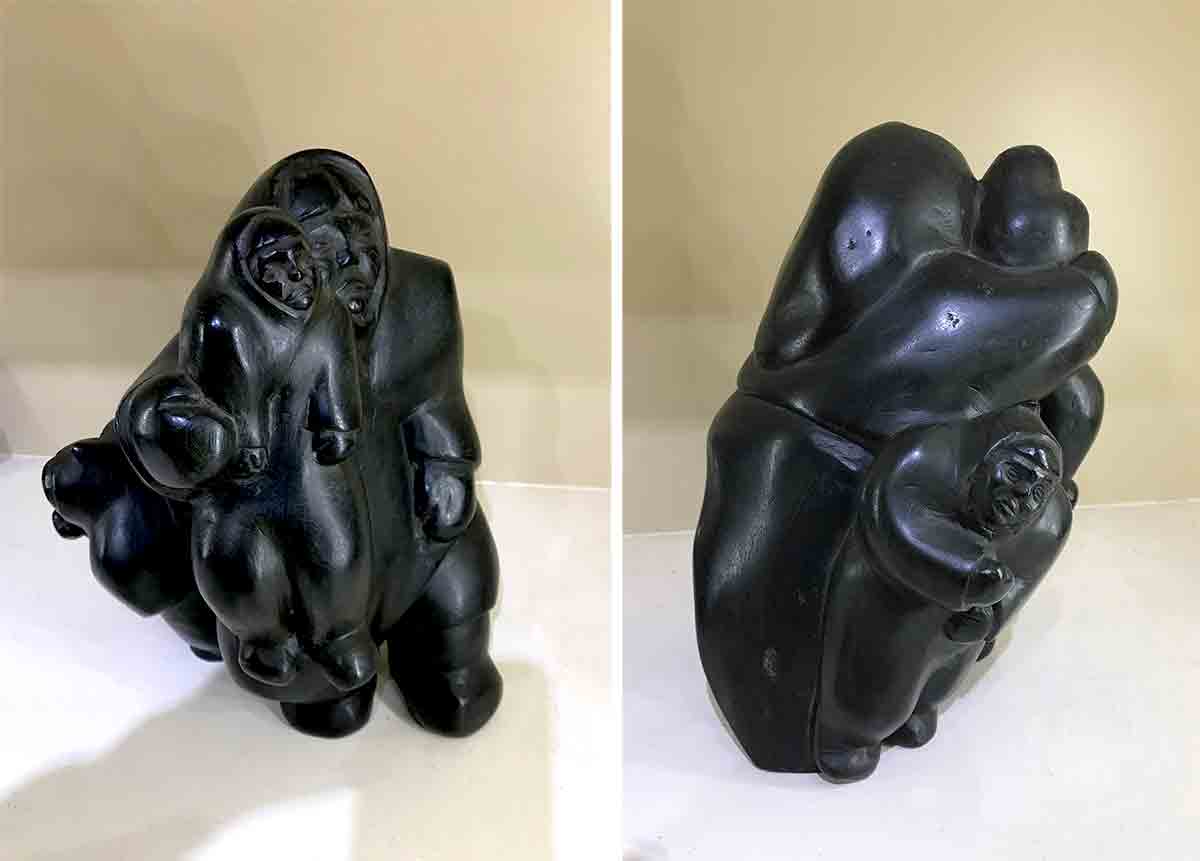
Another family scene, this time by Paul Toolooktuk. The back of this sculpture, right, is a second child having escaped his mother's hug.
Photo by Joram Piatigorsky

I show this sculpture by David Ekoota of a father wrestling with his two children since it shows the dynamic and fun-loving nature of the Inuit.
Photo by Michael Kingsberry, Select Cut Media LLC
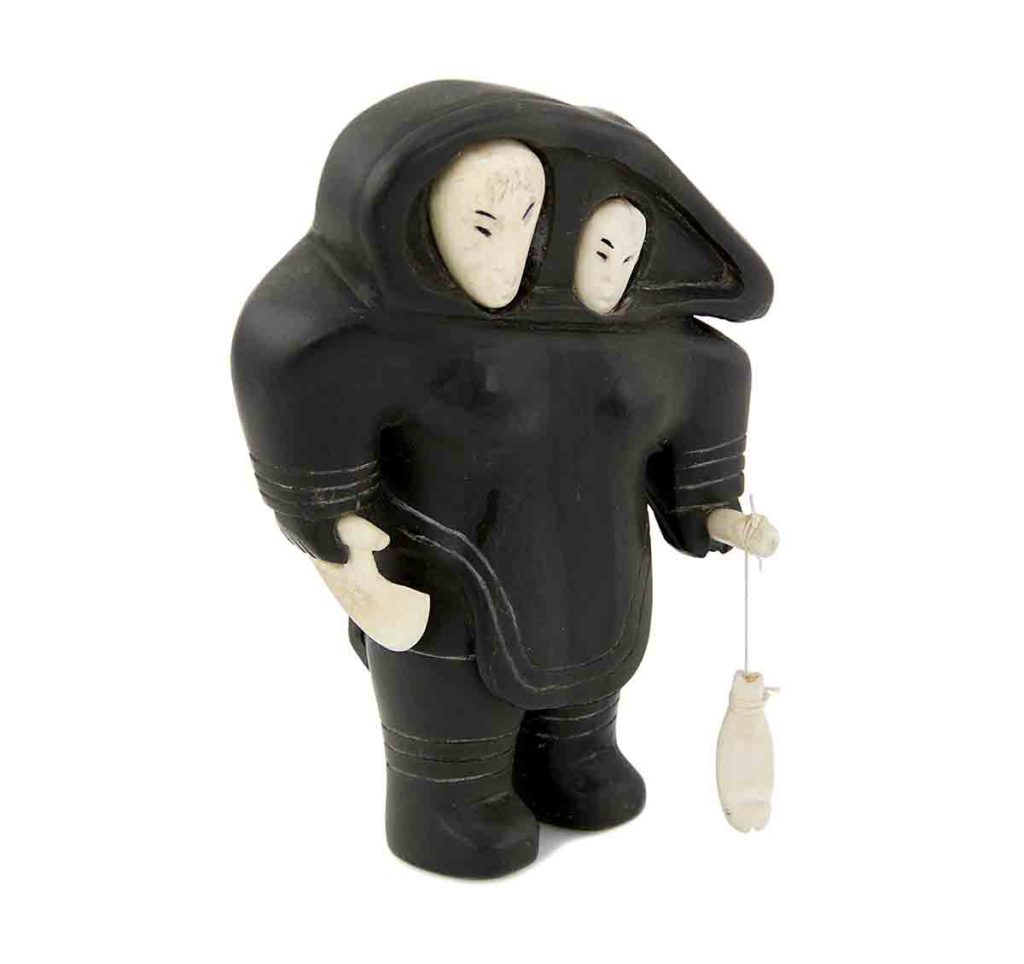
It is not known who made this lovely sculpture. The two faces in the enlarged amauti (hood) are a common representation of mother and child in Inuit sculptures. The ulu in her right hand is the typical instrument used as a knife for cutting food, and the fish dangling from her left hand probably signifies having just caught a fish for dinner.
Photo by Michael Kingsberry, Select Cut Media LLC
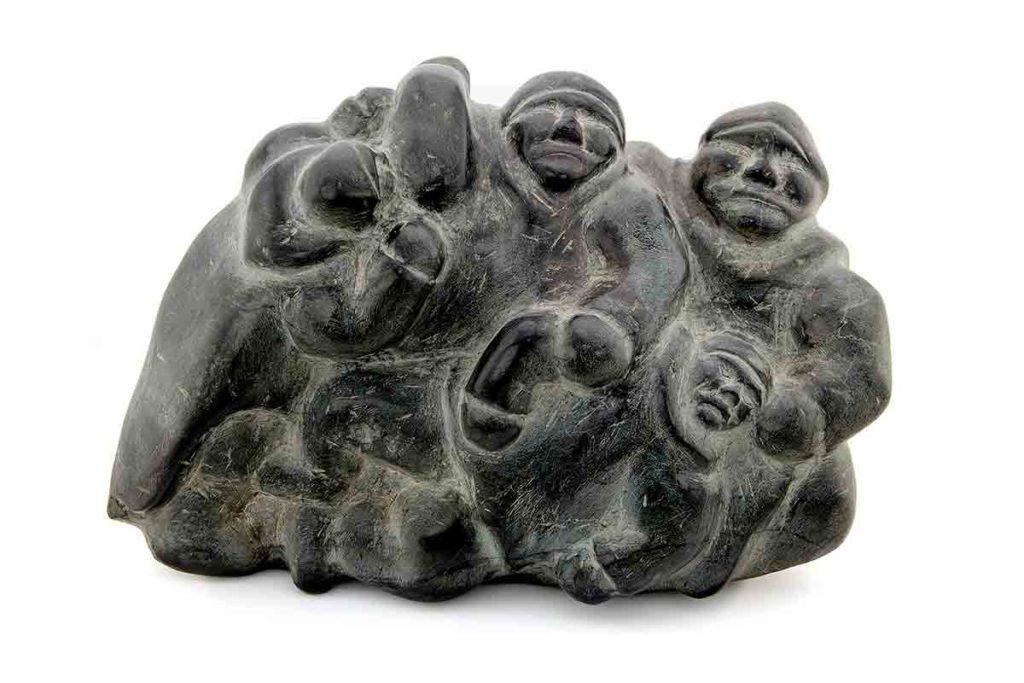
I show this family scene by Barnabus Arnasungaaq since it's so impressionistic and filled with movement. There is great diversity in the carving and artistic styles of Inuit sculptures, which I will show further in later blogs. For now, appreciate the bulky family as a wonderful piece of art!
Photo by Michael Kingsberry, Select Cut Media LLC

Lucy Tasseor's mountain of faces - perhaps most of a village in this case - speaks the Inuit belief that staying connected is the foundation of life, let alone survival! Her faces often protrude from the stone as here, although sometimes she just carves faces flush with the stone.
Photo by Michael Kingsberry, Select Cut Media LLC

I'll end this blog with this group scene of spearfishing from a umiak (boat) by Joasnsie Faber. It is likely that the artist was representing specific family members and fellow Inuks that he knew.



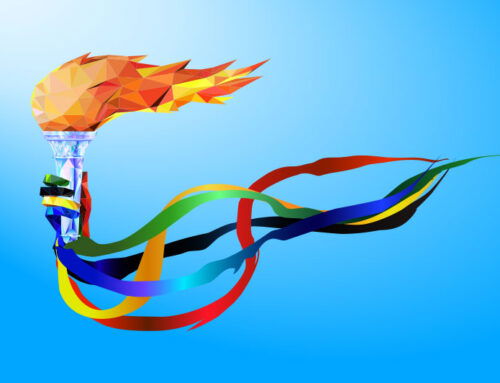
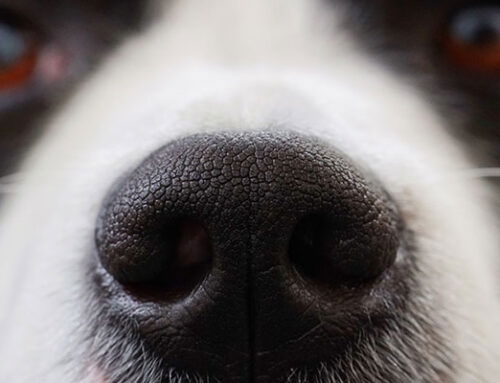

Hello Joram. Beautiful collection! But I don’t see any Inuit wallhangings, ceramics or baskets. No collection is complete without at least a few of these! And at least as much if not (as is likely) more effort and skill goes into making those artworks as carvings or prints. One last point: unless I’m mistaken, the plural of Inuk is Inuit. (So there’s no such thing as “two Inuks”.)
Hopefully you’ll allow this collection to be auctioned by Waddingtons, where Ingo will do it justice and I’m sure it will make a catalogue all its own, all the better to live on in publication and on their website to educate future generations of artists and collectors.
Cheers,
Brad